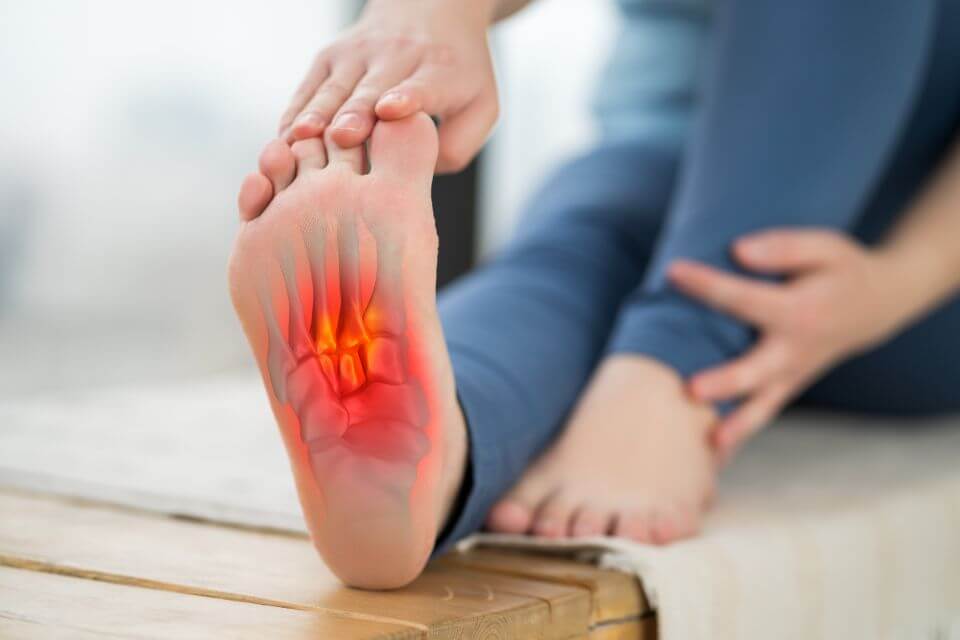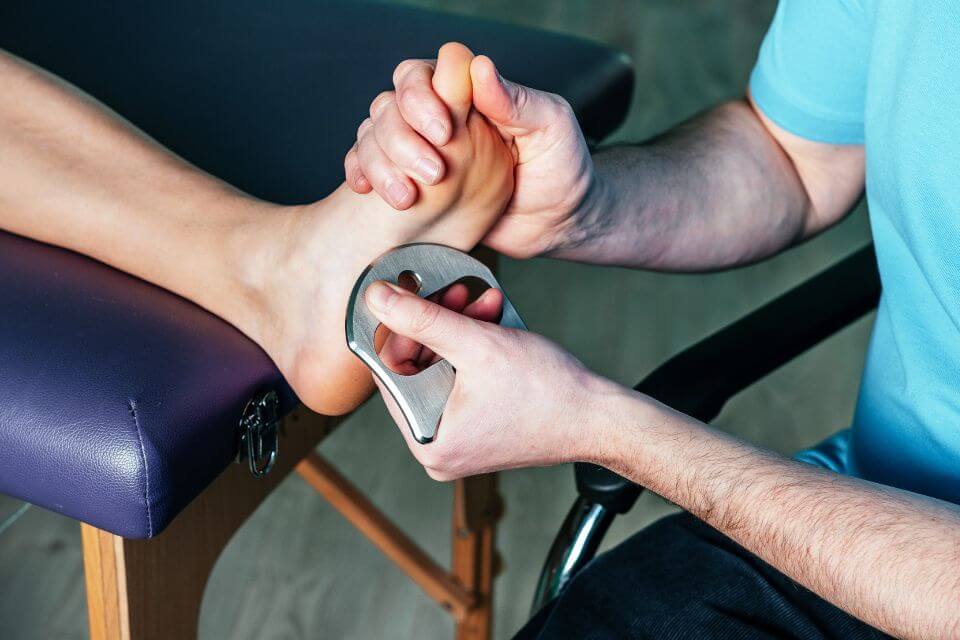Plantar Fasciitis Treatment
Nip plantar fasciitis in the bud and start walking on sunshine once more.
WHAT IS PLANTAR FASCIITIS?
Plantar fasciitis occurs when your plantar fascia (the strong, thick ligament that runs along the bottom of your foot) becomes damaged. The plantar fascia connects your heel bone to your toes, creating the foot’s arch, and acts as a shock absorber — so any sort of inflammation has the ability to cause heel pain and discomfort.
The plantar fascia ligaments experience a lot of wear and tear during daily life; as such, plantar fasciitis is one of the most common orthopedic complaints.




CAUSES OF PLANTAR FASCIITIS
Plantar fasciitis is typically a result of overstretching or overusing the plantar fascia ligament. This tends to happen during activities like running, dancing, aerobics, as well as other sports and activities that involve jumping.
Other possible causes include:
- Being flatfooted
- Having high arches
- Being middle-aged (or older)
- Being overweight
- Being pregnant
- Spending a lot of time on your feet
- Wearing shoes with poor arch support or stiff soles
- Having tight or weak calf muscles
SYMPTOMS OF PLANTAR FASCIITIS
The main symptom of plantar fasciitis is pain under the heel or, sometimes, in the bottom mid-foot area. The pain usually develops over time and may be dull or sharp. Some people describe it as a burning or ache that extends outwards from the heel. It usually affects just one foot but it may affect both.
Other symptoms may include:
- Aching or burning on the sole of the foot
- Swelling in the heel
Many people notice that the pain is worse in the morning (particularly when taking your first steps for the day), after prolonged standing or sitting, and after intense activity.
Treatment For Plantar Fasciitis
To determine whether you have plantar fasciitis or not, your podiatrist will begin by asking you some questions about your symptoms, the type of work you do, and your lifestyle. They will also perform a physical examination of your feet and calves to look for tightness and/or discomfort. They may refer you for an x-ray or ultrasound, however, this is often not needed.
Some of the treatment methods your podiatrist may recommend include:
- Pain relief medications, such as ibuprofen or paracetamol, to manage your pain in the short term
- Resting your foot as much as possible
- Applying an ice pack to your foot for between 10 and 20 minutes up to four times a day
- Using orthotics in your shoes
- Exercises to stretch your plantar fascia, helping the muscle to better absorb your body weight
- Shock wave therapy to stimulate healing in the ligament
In more severe cases — and if other treatment methods have been unsuccessful — it may be recommended that you have steroid injections in your heel or possibly undergo surgery.
Your Plantar Fasciitis Questions Answered
Can plantar fasciitis be prevented?
While there’s no way to completely prevent plantar fasciitis from developing, there are some ways that you may be able to reduce your risk. These include:
- Maintaining a healthy weight
- Choosing support footwear
- Warming up before physical activity
- Giving yourself time to recover between activities
- Avoiding activities that cause pain
How long does it take to recover from plantar fasciitis?
Can children develop plantar fasciitis?
Yes, children may develop this condition as a result of overusing the plantar fascia ligament or from wearing unsupportive shoes. If your child is complaining of pain in their heel, it’s recommended that you take them to see a podiatrist sooner rather than later, as the pain tends to worsen over time.
Are there any potential complications of plantar fasciitis?
If you ignore the condition, it is possible to develop chronic heel pain. This may change how you walk and possibly cause injury to your legs, knees, hips, and back. This is why you should get heel pain of any kind addressed as soon as possible.
WHY CHOOSE CAPITAL PODIATRY?
Multidisciplinary Approach
Our team brings a variety of strengths to the table, and we’ve expanded over the years to focus on several areas of podiatry (including dry needling, biomechanics, fascial release, and more).
Patients Come First
Our patients are the heart of our clinic. We care deeply about the people we work with, and it’s our goal to improve the lives of our patients. We aren’t in the business of diagnosing and moving on.Growth & Innovation
We’re driven by innovation and are big believers in life-long learning, which is why we’re always on the lookout for ways to improve (both in the services and type of treatment methods we offer).
DON’T LET HEEL PAIN DEFINE YOU – VISIT US TODAY
TAKE THE FIRST STEP
Every journey starts with a single step, there’s no need to suffer any longer.
Make an appointment with our experienced podiatrists today.